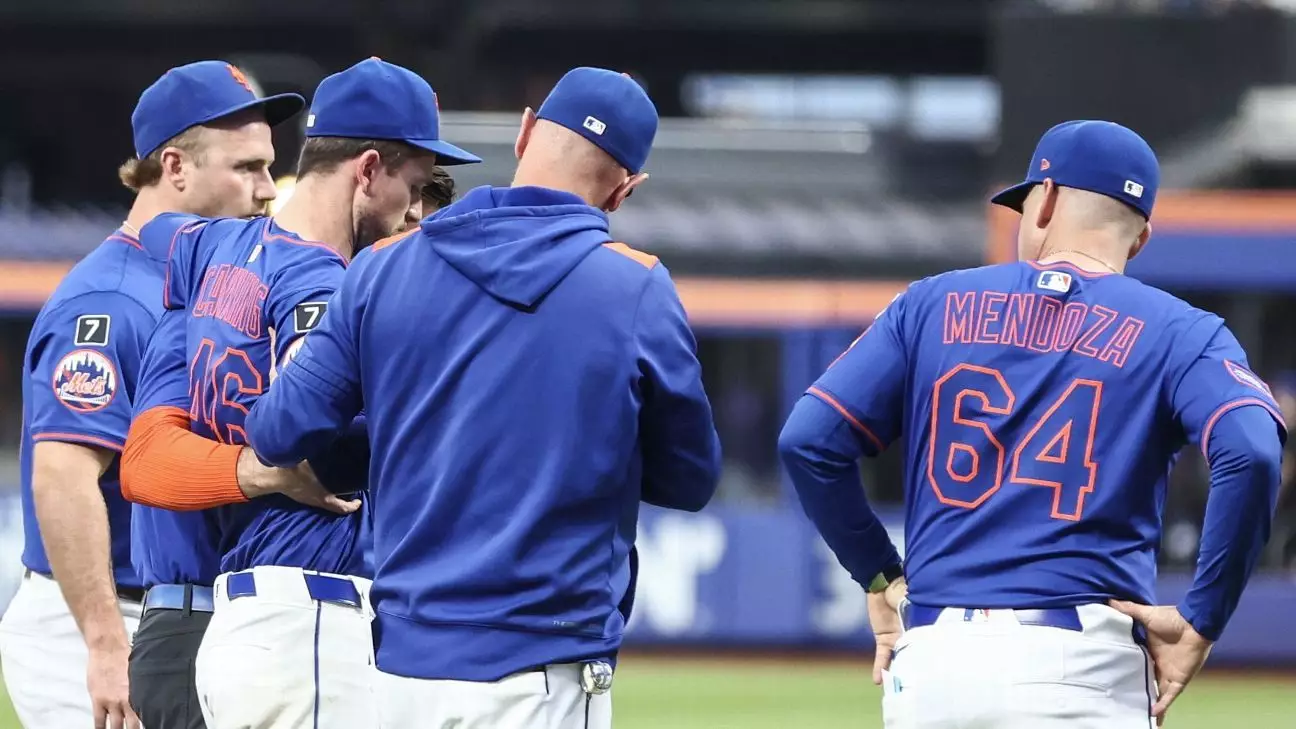The New York Mets find themselves ensnared in a mounting pitching crisis as injuries continue to ravage their already fragile rotation. The latest setback comes in the form of right-hander Griffin Canning, who appears to have suffered a severe Achilles injury during a routine infield play, underscoring the precarious nature of their pitching depth. This injury compounds an already troubling trend for the Mets, which has seen key starters sidelined in quick succession, severely hampering their on-field competitiveness. The nature of Canning’s injury, sustained without contact, also raises questions about conditioning, workload, and perhaps the underlying durability of the Mets’ pitching staff.
The Human Toll Behind the Statistics
Beyond the numbers—7-3 win-loss record with a respectable 3.77 ERA—there’s an overlooked narrative surrounding Canning’s role in the Mets’ rotation. His transition from last season’s struggles with the Los Angeles Angels to a steady, dependable arm for New York this year illustrates not only his personal resilience but also the importance of having reliable, middle-tier starters to anchor a pitching staff. Manager Carlos Mendoza’s visible distress and first baseman Pete Alonso’s empathetic remarks reveal the emotional weight such injuries carry within a team. For players and coaches alike, repeated losses of key athletes erode morale and continuity. These are not just interruptions on a stat sheet—they are ruptures in team chemistry and confidence that are far trickier to remedy.
Ripple Effects and Organizational Implications
With not only Canning but also ace Kodai Senga sidelined due to a hamstring strain, Tylor Megill nursing an elbow sprain, and Sean Manaea facing yet another setback from a bone chip in his healing elbow, the Mets’ rotation is teetering dangerously on the precipice. The cumulative effect of injuries has translated to a dismal 4-10 record over the past two weeks, a stretch that severely strains playoff aspirations. The Mets front office faces urgent challenges: how to keep the pitching staff afloat amid these continual injuries, whether to lean on inexperienced prospects, or pursue external help via trades or free agency. This sequence of unfortunate events is a harsh wake-up call that depth in pitching must go beyond hopeful prospects; it demands robust injury prevention strategies and thoughtful player usage.
Questioning Injury Management and Player Durability
While injuries are an inevitable part of professional sports, this series of ailments forces a candid look at the Mets’ approach to injury prevention and management. Are recovery protocols attuned adequately? Is the coaching staff addressing fatigue factors honestly? The Achilles injury to Canning occurred during what should have been a low-impact moment — breaking toward a ground ball— which might hint at underlying stress or imbalance that hadn’t been addressed early enough. Perhaps, there is an institutional shortcoming regarding pitcher maintenance and conditioning that has gone unnoticed until now. These are difficult conversations for any team, especially amid a high-pressure season, but ignoring them risks repeating a damaging cycle.
The Silver Linings and Strategic Adjustments
Despite the grim outlook, there are sparks of hope amid the adversity. Frankie Montas’s return to form with five scoreless innings after recovering from lat issues offers an encouraging example of what proper rehab and patience can achieve. The Mets also have players like Sean Manaea who, after receiving treatment, might rejoin the rotation soon, potentially alleviating some pressure. However, relying on miracle recoveries is not a sustainable strategy. The Mets must leverage this challenging stretch as a catalyst for deeper roster evaluation and flexibility. It is pivotal to foster a multi-layered approach—injecting fresh arms, optimizing existing starters’ health management, and perhaps recalibrating expectations for the season.
The Mets’ current predicament with their pitching staff is emblematic of the fragile intersection between talent, health, and strategic management in Major League Baseball. Griffin Canning’s injury is not merely another list addition; it encapsulates the broader structural problems facing the Mets. This trying time demands that the organization be both patient and proactive, balancing immediate needs with long-term sustainability. The resilience of the team’s coaching, medical staff, and front office will be tested—not just in winning games, but in rewriting how they build and protect their most critical assets: their players.


Leave a Reply